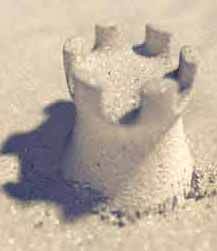Why do we dig the beach (with bucket and spades)?
“The bucket and spade holds more significance than its role as a sandcastle-building tool; seen through the tidal changes and the different angles of photography, and especially through their relational engagement with the beach, the agency of the bucket and spade is revealed.”
- explains Adrian Franklin MA Kent, PhD Brist, (Professor of Sociology at theUniversity of Tasmania, Australia) in a newly published paper for the journal Tourist Studies, entitled: ‘On why we dig the beach: Tracing the subjects and objects of the bucket and spade for a relational materialist theory of the beach‘
With the aid of a series of historical photos documenting bucket-and-spade culture spanning more than 100 years, the author points out that the beach is :
“[...] a place where clear lines between the human and non-human world do not exist, where sensual, muscular and mental engagements are mediated by extensions of the body, the spade and the bucket. It is a choreography of failure for humanity, in which nature, the sea, triumphs every time, even though the child has an opportunity to struggle against it and to reimagine such relationships anew.”
Also see: An Improbable short series on ‘Sandcastles in Academia’.


 BONUS (cited in the paper) ‘Castles Made of Sand’ by Jimi Hendrix
BONUS (cited in the paper) ‘Castles Made of Sand’ by Jimi Hendrix

Marc Abrahams's Blog
- Marc Abrahams's profile
- 14 followers




